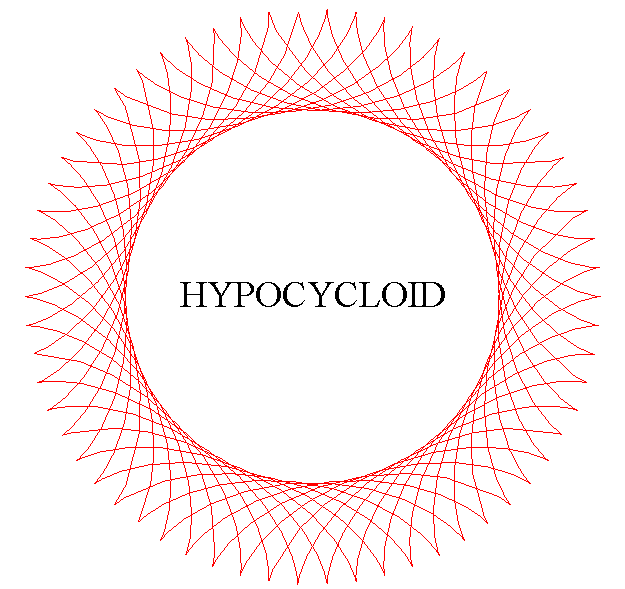
| next curve | previous curve | 2D curves | 3D curves | surfaces | fractals | polyhedra |

| Curve studied by Dürer in 1525, RØmer
in 1674 and Daniel Bernoulli in 1725.
Prefix coming from the Greek hupo: under. |
The hypocycloids are the curves described by a point on a circle (C) rolling without slipping on, and inside, a base circle (C0), when the rolling circle is smaller than the fixed one. Therefore, they are special cases of hypotrochoids.
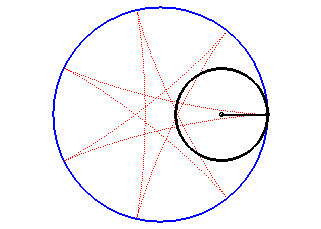
| Complex parametrization: Cartesian parametrization: Radius vector: Intrinsic equation 2 (form 1): |
The hypocycloids are curves composed of isometric arcs
(the arches) connecting at a number of cuspidal points (obtained
for ) equal
to the numerator of q if it is rational or an infinite number of
cusps otherwise.
When q is rational, ,
the curve is algebraic and rational (take
as a parameter).
It has the same structure as a regular polygon, crossed
if m ³ 2, with n vertices
linked from m to m by curves located inside the circle (C0).
The notion of simple hypocycloid with n cusps (En) refers to the case q = n, i.e. when there are no crossings.
If we take 0 < q < 1 in the formulas above,
then the rolling circle is larger than the base circle; we are therefore
in the case of the pericycloids,
which also are epicycloids
for which the ratio between the base circle and the rolling circle is equal
to (so,
if we take
in the formulas above, we get the epicycloid with n cusps).
For q > 1, when b is changed into a
– b (i.e. q into
or
into
in the rational case), the curve is not modified. This constitutes the
property of double generation of the hypocycloid:
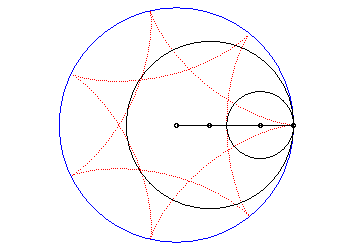
Therefore, we get all the possible hypocycloids by taking
only b £ a/2 , i.e. q³
2:
Note that the hypocycloid with parameter q = a/ b (irreducible
representation of q) has the same shape as the crossed
regular polygon with symbol {a/b}

q = 1: point |

q = 2: La Hire line |
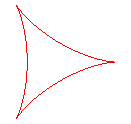
q = 3: deltoid |
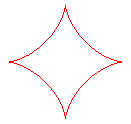
q = 4: astroid |
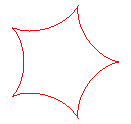
q = 5 |
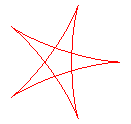
q = 5/2 |
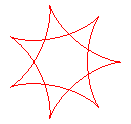
q = 7/2 |
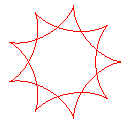
q = 9/2 |
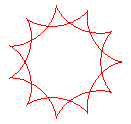
q = 11/2 |
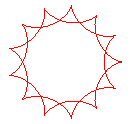
q = 13/2 |
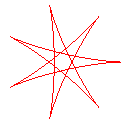
q = 7/3 |
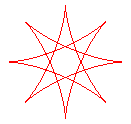
q = 8/3 |
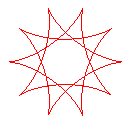
q = 10/3 |
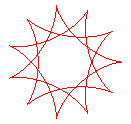
q = 11/3 |
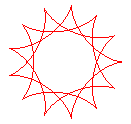
q = 13/3 |
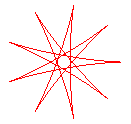
q = 9/4 |
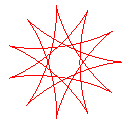
q = 11/4 |
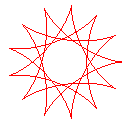
q = 13/4 |
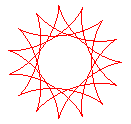
q = 15/4 |
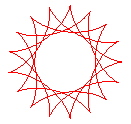
q = 17/4 |
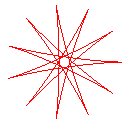
q = 11/5 |
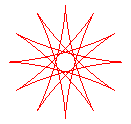
q = 12/5 |
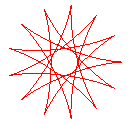
q = 13/5 |
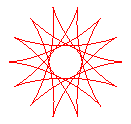
q = 14/5 |
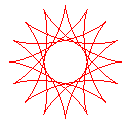
q = 16/5 |
The hypocycloid is the envelope of a diameter of a circle with radius equal to twice that of (C), rolling without slipping on, and outside, (C0).
It is also the envelope of a chord (PQ) of the
circle with centre O and radius
(circle of the vertices of the hypocycloid), when P and Q
travel along the circle in opposite directions with speeds forming the
constant ratio q – 1 (this constitutes the Cremona generation).
Finally, it is the negative
pedal with respect to O of the rose: .
Its evolute
is its own image by the direct similarity with centre O, ratio ,
and angle
.
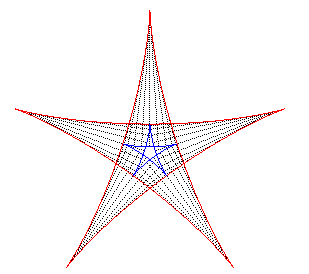
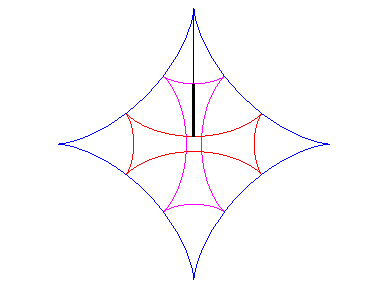
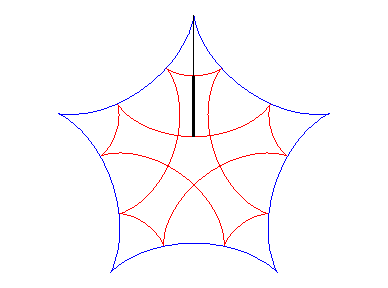
| If two tracing circles, symmetric images of one another
about the centre of the fixed circle, roll inside the base circle in phase
opposition, then the segment line joining these two points (which has constant
length) envelopes another hypocycloid, with parameter |
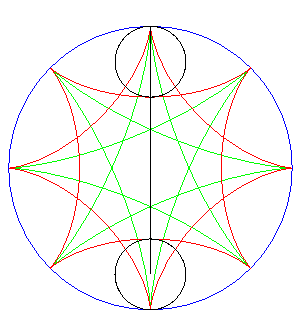 |
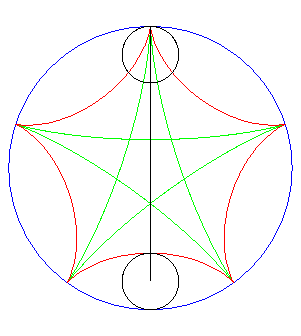 |
| Ditto if the tracing circles are outside the fixed circles;
when the points P et Q trace an epicycloid
with parameter q, the segment line PQ envelopes again a hypocycloid
with parameter |
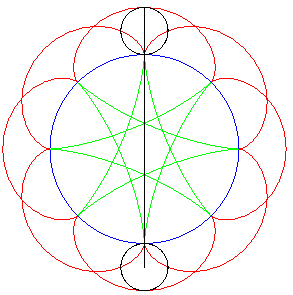 |
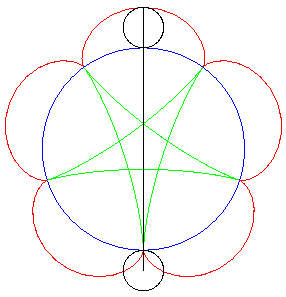 |
The hypocycloids can also be defined as the trajectories
of a motion that is the sum of two uniform circular motions with same speed
and opposite directions (with complex parametrization:
with
).
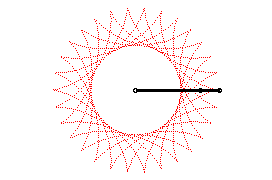
The hypocycloids are also projections of spherical helices, and, finally, the curves of small oscillations of the Foucault pendulum.
The differential equation
proves, thanks to the Euler-Lagrange equation, that, as the cycloid, the
hypocycloid is a brachistochrone
curve: it is the plane curve that minimises the travel time of a moving
point subject to a central force field proportional to 1/r and moving
freely along this curve; it is therefore the shape of a tunnel dug in the
Earth that would minimise the travel time from a point A to a point
B
on the surface, by the pull of gravity.
See also, in 3D, the spherical
cycloids.
| next curve | previous curve | 2D curves | 3D curves | surfaces | fractals | polyhedra |
© Robert FERRÉOL
2017